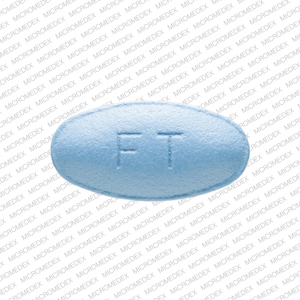Toviaz Dosage
Generic name: FESOTERODINE FUMARATE 4mg
Dosage form: tablet, film coated, extended release
Drug class: Urinary antispasmodics
Medically reviewed by Drugs.com. Last updated on Dec 12, 2024.
Recommended Dosage for Adult Patients With OAB
The recommended starting dosage of Toviaz in adults is 4 mg orally once daily. Based upon individual response and tolerability, increase to the maximum dosage of Toviaz 8 mg once daily. For administration instructions, see Dosage and Administration (2.6).
Recommended Dosage for Pediatric Patients Aged 6 Years and Older With NDO
Pediatric Patients Weighing Greater than 25 kg and up to 35 kg
The recommended dosage of Toviaz is 4 mg orally once daily. If needed, dosage may be increased to Toviaz 8 mg orally once daily. For administration instructions, see Dosage and Administration (2.6).
Pediatric Patients Weighing Greater than 35 kg
The recommended starting dosage of Toviaz is 4 mg orally once daily. After one week, increase to Toviaz 8 mg orally once daily. For administration instructions, see Dosage and Administration (2.6).
Recommended Dosage in Adult Patients With Renal Impairment
The recommended dosage of Toviaz in adult patients with renal impairment is described in Table 1. For administration instructions, see Dosage and Administration (2.6).
| Estimated Creatinine Clearance* | Recommended Dose |
|---|---|
|
|
|
CLcr 30 to 89 mL/min |
8 mg |
|
CLcr 15 to 29 mL/min |
4 mg |
|
CLcr <15 mL/min |
4 mg |
Recommended Dosage in Pediatric Patients With Renal Impairment
Pediatric Patients Weighing Greater than 25 kg and up to 35 kg
The recommended dosage of Toviaz in pediatric patients with renal impairment weighing greater than 25 kg and up to 35 kg is described in Table 2. For administration instructions, see Dosage and Administration (2.6).
| Estimated Glomerular Filtration Rate (GFR)* | Recommended Dose† |
|---|---|
|
eGFR 30 to 89 mL/min/1.73m† |
4 mg |
|
eGFR 15 to 29 mL/min/1.73m† |
Use is Not Recommended |
|
eGFR <15 mL/min/1.73m2 or requiring dialysis |
Use is Not Recommended |
Pediatric Patients weighing greater than 35 kg
The recommended dosage of Toviaz in pediatric patients with renal impairment weighing greater than 35 kg is described in Table 3. For administration instructions, see Dosage and Administration (2.6).
Table 3: Toviaz Recommended Dose in Pediatric Patients Aged 6 Years and Older Weighing Greater Than 35 kg With Renal Impairment (Administered Orally Once Daily)
|
|
|
Estimated GFR* |
Recommended Dose† |
|
eGFR 30 to 89 mL/min/1.73m‡ |
8 mg‡ |
|
eGFR15 to 29 mL/min/1.73m‡ |
4 mg |
|
eGFR <15 mL/min/1.73m2 or requiring dialysis |
Use is Not Recommended |
Toviaz Dosage Modifications Due to Strong CYP3A4 Inhibitors
Adult Patients with OAB
The maximum recommended dosage is Toviaz 4 mg orally once daily in adult patients taking strong CYP3A4 inhibitors. For administration instructions, see Dosage and Administration (2.6).
Pediatric Patients with NDO
Pediatric Patients Weighing Greater than 25 kg and up to 35 kg
The use of Toviaz in pediatric patients weighing greater than 25 kg and up to 35 kg and taking strong CYP3A4 inhibitors is not recommended. For administration instructions, see Dosage and Administration (2.6).
Pediatric Patients Weighing Greater than 35 kg
The maximum recommended dosage is Toviaz 4 mg orally once daily in pediatric patients weighing greater than 35 kg and taking strong CYP3A4 inhibitors. For administration instructions, see Dosage and Administration (2.6).
More about Toviaz (fesoterodine)
- Check interactions
- Compare alternatives
- Pricing & coupons
- Reviews (74)
- Drug images
- Side effects
- During pregnancy
- Generic availability
- FDA approval history
- Drug class: urinary antispasmodics
- Breastfeeding
- En español
Patient resources
Professional resources
Related treatment guides
See also:
Further information
Always consult your healthcare provider to ensure the information displayed on this page applies to your personal circumstances.


